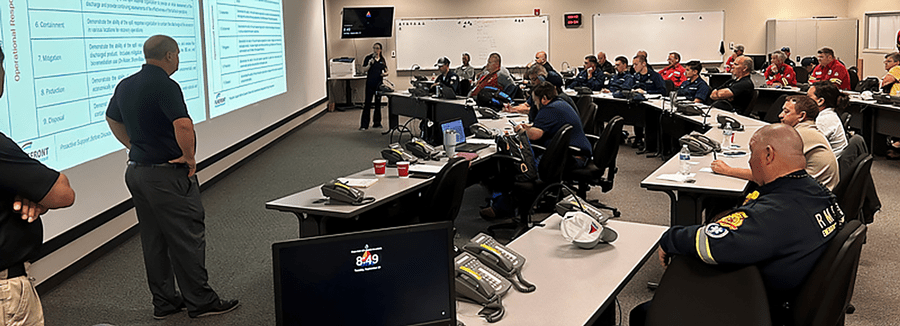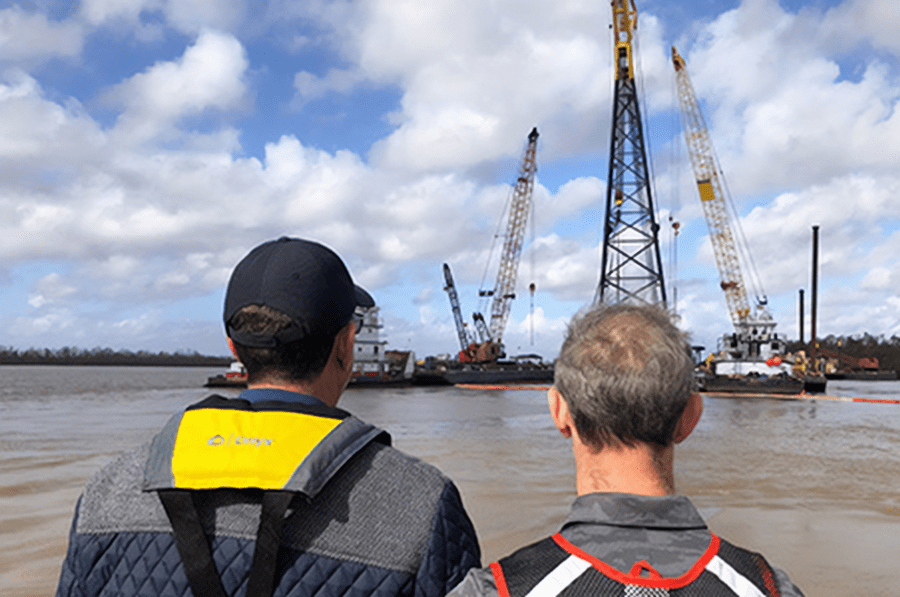Significant capital investments and ingenuity matched with commitment serve as the framework for operating oil and gas assets offshore. Whether populating the deep waters of the Gulf of Mexico or other offshore locations with major structures to extract future fuel sources, strategy and planning catalyze the logistical challenge of moving people and equipment to deep water superstructures. Great thought and design also go into providing for a safe life aboard, but before any of these actions are implemented, critical precautions must be met. Dictated by federal mandate, emergency preparedness and response measures must be approved and in place before any work ever takes place.
Those who have worked in the oil and gas industry for an extended period have likely heard that every regulation implemented is written in blood. More specifically, the prevailing opinion indicates that someone was hurt or lost a life, and as a result, a regulation was established to prevent repeating the same tragic mistake.
Emergency preparedness and response measures are the procedures necessary to guide offshore companies in preparing for an unplanned event or emergency and then in managing it after it occurs. Historical events accumulate to demonstrate that previous mistakes made in these areas support the notion of learning from the past.

Emergency Preparedness
James Junkin, CEO of Mariner-Gulf Consulting and Services, points to a new age in emergency preparedness necessary to operate safely and legally offshore. Lessons learned from past tragedies have solidified what the industry now considers standard operating protocol.
“Things have changed significantly since the Deepwater Horizon incident,” says Junkin. “The worst day in oil and gas history has turned into maybe the best opportunity for lessons learned. The situation for emergency preparedness is much different today than from April 2010.”
Today’s offshore oil and gas industry is managed under the watchful eye of the Bureau of Safety and Environmental Enforcement (BSEE). Junkin indicates that while the industry was once operated by the American Petroleum Institute (API), those were recommended practices. Now, BSEE serves as the industry’s regulator.
Junkin points to the Safety and Environmental Management System (SEMS) requirements as the backbone of emergency preparedness. These requirements ensure operators focus on integrating safety and environmental concerns into all activities. Mechanical integrity programs establish the safe operation of equipment utilized offshore.
“Mechanical integrity plays a critical role in emergency preparedness,” says Junkin. “It ensures operators have a plan of safe operation for critical and safety sensitive equipment and additionally makes sure equipment has been properly maintained to achieve that safe operation in the field.”
Emergency Response
According to Kevin Voisin, COO and partner at Forefront Emergency Management, while BSEE addresses the requirements before incidents occur, the United States Coast Guard possesses jurisdiction over response protocols.
“Response plans have to be submitted to the Coast Guard before the start of work, and they have to be approved,” says Voisin.
While the Deepwater Horizon incident will always be remembered for multiple failures that resulted in a tragic loss of life, response protocols have been impacted by other tragic events as well. Voisin says the response requirements of today were primarily shaped by the lessons learned from the Exxon Valdez spill of 1990.
“There were response regulations before Valdez, but they didn’t have a lot of teeth to them,” says Voisin. “The existing regulations at that time had provisions for emergency response, but they weren’t precise. You had the Clean Water Act, Resource Conservation and Recovery Act (RCRA), the Superfund Amendments and Reauthorization Act (SARA) of 1986, and the Oil Pollution Act (OPA) of 1990, which came right after Valdez and laid out most of the regulations we follow today.”

To ensure that operators can adequately respond to emergencies, a series of drills must be conducted. Quarterly notification drills must be carried out in conjunction with semi-annual response drills. Additionally, operators must participate in an annual tabletop drill.
“They can show up at your office or on the offshore asset, or they can even call you by phone to initiate the drill,” says Voisin. “If an operator fails the drill, they can make you redo it until you pass, but that is rare because most use professional third-party teams with experience to manage this process.”
In addition to properly preparing and successfully filling drill requirements, Voisin explains that the training aspect of personnel is critical to the successful implementation of response protocols. At a baseline, response personnel must complete qualifying individual training and incident command training. Those involved in the environmental aspect of cleanup measures must complete the 40-hour HAZWOPER course.
“Training is crucial, and one’s role in incident management and response dictates requirements to be fulfilled,” says Voisin.
Implementation
The offshore oil and gas industry has matured into a responsible sector that understands the importance of workplace safety every day, with the mistakes of the past still vividly present today. Instead of repeating history, the industry strives to learn from it and follow measures designed to ensure that workers return home safely and that the environment remains unharmed as a result of its activities.
To ensure emergency preparedness and response measures are met, operators largely solicit professionals, such as Mariner Gulf, to meet their training needs while also contracting companies like Forefront Emergency to serve as the manager of response plans. Enlisting the assistance of professionals who provide specific services related to emergency preparedness and response serves as a conduit for ensuring compliance.
After enduring tragedies like the Exxon Valdez and Deepwater Horizon, the offshore oil and gas industry was compelled to confront its shortcomings and establish a framework that would ensure the best possible scenario for a safe work environment. Proper training and planning are essential to prepare for emergencies. While the intention is never to experience an emergency, an emergency response plan can be implemented when needed. Together, emergency preparedness and response measures train offshore operators and their employees in the event of an incident, with the intention of never having to put into practice what is learned only through drills.
Headline photo: Emergency response personnel survey the cleanup of an oil spill. Photos courtesy of Forefront Emergency.
Nick Vaccaro is a freelance writer and photographer. In addition to providing technical writing services, he is an HSE consultant in the oil and gas industry with twelve years of experience. Vaccaro also contributes to SHALE Oil and Gas Business Magazine, American Oil and Gas Investor, Oil and Gas Investor, Energies Magazine and Louisiana Sportsman Magazine. He has a BA in photojournalism from Loyola University and resides in the New Orleans area. Vaccaro can be reached at 985-966-0957 or nav@vaccarogroupllc.com.






